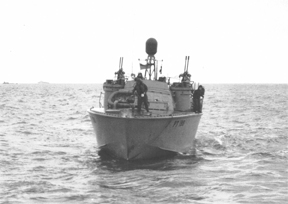 PATROL TORPEDO BOAT PT-199 |
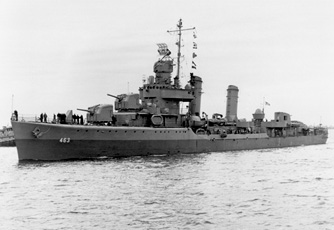
DESTROYER USS CORRY (DD-463) |
FIRST-HAND D-DAY ACCOUNTS OF PT-199 CREWMEMBERS:
- Commanding Officer Lieutenant Bill Liebenow
- Gunner’s Mate, 1st class Stan Wysocki
- Gunner’s Mate, 3rd class Jim Dempsey
FIRST-HAND ACCOUNT OF PT-199 COMMANDING OFFICER LT. BILL LIEBENOW
IN AUGUST 1943, LIEBENOW HAD RESCUED JOHN F. KENNEDY IN THE PACIFIC AFTER
KENNEDY'S PT-109 WAS CUT IN HALF BY A JAPANESE DESTROYER. THEN, ON D-DAY,
LIEBENOW AND CREW RESCUED MORE THAN 60 USS CORRY SURVIVORS OFF UTAH
BEACH, NORMANDY.
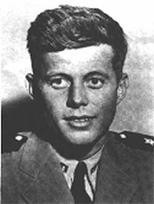
|
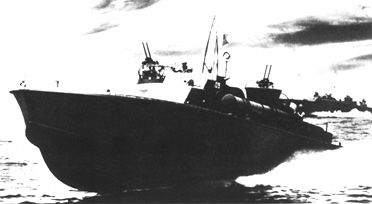
|
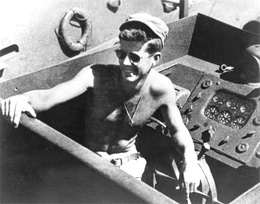
|
|
LT(jg) John F. Kennedy |
PT-109 |
Kennedy aboard PT-109 |
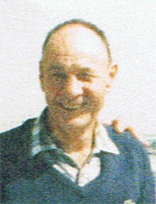 (1988 photo)
(1988 photo)Lt. Bill Liebenow, Commanding Officer, PT-199 |
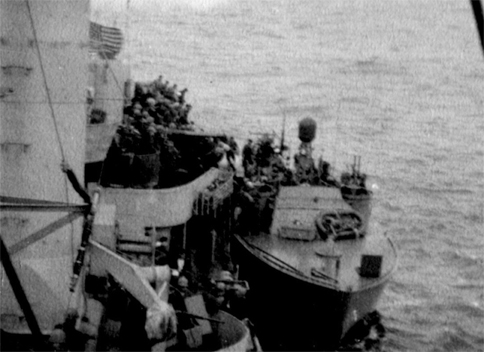 Close-up: PT-199 delivers USS Corry survivors to destroyer USS Fitch (DD-462). [photo by John Townsend, Communications Officer, USS Fitch, courtesy, Radio Officer McKern, USS Fitch.] |
My orders
came through in February 1944 to report back to Melville, R.I.
I had flight orders which meant, even with the delays between
islands, I got home in about seven days.
I missed seeing Kennedy in Melville, being there only a couple of
weeks before I got orders to England.
This was
a different war. PTs were
patrolling the channel and running special missions.
My outfit was operating out of Dartmouth, England.
The most
notable event of my life and I suppose of the thousands who took part, was
the Normandy Beach invasion, D-Day, June 6, 1944.
I was a special officer on board the PT-199 which was assigned patrol
duty around the communications vessel controlling the landings near
Cherbourg. Our first assignment was to escort the rocket launcher boats into
the beach. This was at H-4 hours. These were LCVPs modified to hold bank on
bank on bank of rockets. They were driven right into the beach and the
rockets released. This added up to a lot of explosive power from a very
small vessel. You got only one shot – all rockets were released at once,
and then you had to get out. The
shore battery fire was intense, many of these boats were destroyed.
As
daylight arrived you could grasp the vastness of the Allied armada, there
was ships and boats everywhere! It must have been something to see from an
airplane. We were so engrossed in our own little sector that we had no time
to look around.
Sometime
after sun up we were patrolling our assigned sector when one of the
destroyers exchanging shots with a shore battery took a direct hit and blew
up. [The destroyer was the USS Corry
(DD-463).] For the next couple
hours we were picking the crew up from the water – that is, the survivors.
This was
the first time in my life that I had ever given artificial respiration. Our
entire crew was pulling people out of the water, checking them over and
pumping air into them by the old back pressure method. I don’t recall
exactly how many we pulled out but I do know the PT-199 was loaded and we
took in tow a full life boat. We
deposited the entire lot on board a ship [USS Fitch (DD-462) ] and returned to our station.
We stayed
on station at the landing site five days and nights. I don’t remember
going to sleep during this whole period for more than a few minutes at a
time. We tried to rotate watches in the orderly Navy manner, but every time
you’d get to sleep something would happen and general quarters would be
called. We were happy to get orders for a mission back to Dartmouth which
allowed us a couple of days rest.
Our
Channel crossings continued as we ran various missions from our base to the
mainland. I spent a year in Europe and finally got orders back to the
States.
LT. Bill Liebenow, Commanding Officer, PT-199
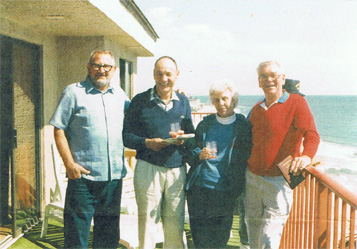 (1988 photo)
(1988 photo)
USS Corry survivor Moe Vestuti, Bill Liebenow and wife, Corry
survivor Richard Wainwright.
Moe Vestuti was rescued by PT-199.
PT-199 ACTION REPORT
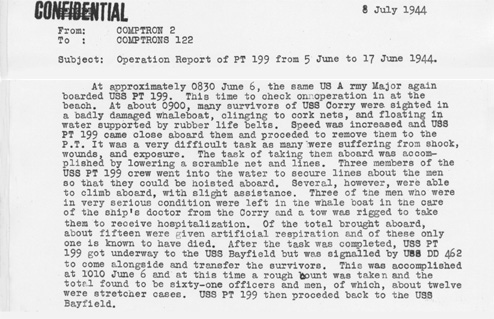
D-Day Account of
Gunner’s Mate, 1st class Stan Wysocki, PT-199
[No
photo available]
I was on P.T. boat PT-199 and we picked up 60 Corry
survivors on D-Day – Normandy beach. The Corry was near us
when she went close to shore to try to put the German Big Bertha guns out of
commission. But she got a direct hit from the German shore batteries, and we
were told to go in and get survivors out.
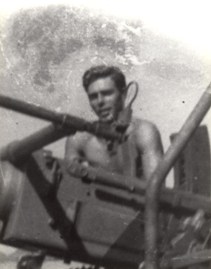 (WWII photo)
(WWII photo) 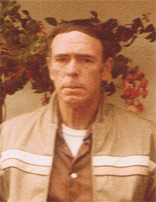 (1979 photo)
(1979 photo)
D-Day Account of Gunner’s Mate, 3rd
class Jim Dempsey, PT-199
From 15-minute audio 1980's recording by Jim Dempsey on the sinking of the USS Corry
and rescue of Corry survivors by
PT-199:
I was a gunner’s mate, 3rd class, aboard the PT-199, Squadron “2”, and I want to word here what I can recollect about the survivors of the USS Corry (DD-463). USS Corry was sunk on D-Day, 1944 – D-Day of Normandy beach head, the Utah area. I recollect that the flagship at the time was a troop ship called the Bayfield. Admiral Moon was in charge. And the morning of June 6th I know that the invasion was at 06:30. The Corry went down that morning, I couldn’t say the specific time, but the Corry was sunk, was hit mid-ship from the batteries on the coast, the German batteries. First it was hit, I believe on the tail, and then as it turned to pull out because they were so close to the shore doing their shelling at the time – as they tried getting away from the beach head, as close as they were, they were hit mid-ship, and the Corry just folded, buckled in center and sank.
After it went down, we were notified by the flag ship Bayfield, to go to the destination of the Corry, where it was last seen going down and pick up any survivors that would be there. We were a PT boat which was a draft of maybe 5 to 6-foot at the most, I don’t know the exact measurement, I’d say 5 to 6 foot, seeing as we did draft such a short footage of water, we were able to go in and pick up survivors without any problem of touching the sea bottom. And of course we were a fast boat, we could get in fast and get out fast. There was an awful lot of shelling at the time, naturally, that morning. Shelling was going both ways.
When
we got there, there was a net with cork on it, there was rope tied together
in squares, sections – great big thing with cork on it, that the men were
hanging on, and they had life preservers, most of them, that I could
recollect, they probably all had them on.
And there was also, I recall, a row boat, or whaleboat – it was a
boat that was put over the side when the ship went down, and there was just
this one boat with the men in it and the men hanging on the net.
When we started pulling them aboard as fast as we could, and as easy
as we could, not to hurt them because there were an awful lot of men,
actually boys that were hurt – that were really hurt.
And as we tried pulling them up, it was a bit of a problem for some
of them because of their injuries and so on.
Our quartermaster, I recall, jumping in without any second thoughts,
you know, he wasn’t told to do it – the skipper didn’t tell him, the
Exec, there’s no officers telling him to do it, he just went over the side.
He had his lifejacket on, he had his, what we call “under weigh”
gear on, and he knew that he could be a lot of help down in the water with
these guys who couldn’t help themselves.
As he pushed them up and they helped themselves, the ones that could,
they just kept climbing up over the side, because we had a net over the side
of our boat – it was a great big line, like a Jacob’s ladder, but 5
times or 6 times wider than that so that they could all come up in different
areas. As they came
aboard, we just put them on the deck, laid them out, put them down in the
crew’s quarters, the officers’ quarters, and we put them down in the
engine room.
Now I recall that there were 60 to 65
– I know it was in the 60’s, the amount of the survivors that we picked
up from the Corry. And the
reason that that sticks in my mind so well is that after it was all over –
the Invasion and so on and so forth, when we got back to England, I used to
always go up in the chart room, when I wrote my letters home, and it was
quiet there
– there was only room for one person actually to write a letter
– and when I was on watch I’d do this, and I’d always go looking
through the quartermaster’s log book.
The quartermaster had logged in his book, I remember so well at that
time, that it was in the 60’s, I remember that – that’s how many he
said that we had picked up.
Now these guys were,
naturally, very happy to be picked up as they were when we took them to a
larger ship – [destroyer USS Fitch (DD-462) ]. We call it a big ship
because the PT boats, we always refer to the big ship baby, you know the
cruisers, battleships, destroyers, and everything that’s so large, and
we’re so small. So the big
ship naturally was the one we had to take these boys to.
And I remember that when they were leaving our boat and going up the side of the larger ship, they were so grateful, so happy to be where they were, and thankful to us, but we just happened to be there and were glad to do what we did do at the time – they shook our hands, the ones that were closest, just grabbed our hands and hugged guys just before they went up the side, just to say “Thanks” – that’s all, no big deal, they didn’t go through any kind of a lot of words – that’s all it took was just a handshake and a hug, just to say “Thanks.”
And I
recall, too, that before these guys left us, they were on our boat being
treated by a doctor that was aboard the Corry when it was sunk, and he
worked so well, just running from man to man, just giving shots as he could,
and telling other guys to do things that would help them. He just would give
some kind of an order to do this, do that.
I did read later on that he received a naval medal for this heroic
work that he’d done.
And one specific thing – I remember
it so clearly as I just sit here and put myself in that place again, that
these guys were very quiet when they came aboard.
There was none of that, “Hey, over here, I need help, I need it bad,” –
and they did – so many did need it bad, but nobody said anything
– they just waited their turn. They figured they were where they were and
they were happy for that, and it was quiet – it was nice and quiet and
they just took things as they come.
And I recall too, how the engine room
was so filled up with guys. You know, there’s not a lot of room down there
– we only could put a few down there, just lay them between the engines.
And as they went down there, they were receiving cigarettes from some
of the crew, because, you know, what could we do for them, try to make
them feel comfortable – naturally a cigarette was the best thing we could do
at the time besides the medical treatment they were getting. And the guys
that didn’t need the medical treatment, you know, were taking the
cigarettes and sitting there and laying
there, being quiet, whatever, but the poor engine room – the guy
that was down in the engine room at the time – the “Motor Mac” – he
was having one heck of a time because of the fact that – (it’s funny you
always have a little funny sensation on things like this, I guess, that
something’s got to be sort of on the laughable side) – he had these guys
coming down with cigarettes in their hands, and we had a hundred octane
gasoline on the boat, and the engineer just
couldn’t get it through to them, you know, he was going through all kinds
of motions, trying to let them know they can’t smoke – the noise down
there is terrific, you just can’t talk to each other. And as far as the
crew and officers – we never smoked, never had a cigarette past the chart
house, never went past there because of the gasoline, and we were very
particular about how we smoked even at that area.
But to have them actually down in the engine room smoking cigarettes
like that, the engineer was frantic. He
was really in trouble, so we thought – it all ended up well – that was
the comical part of it.
There is something that I picture so clearly when I think about the whole situation – the guys that were in the engine room, you could pick them out so easily because of the black features of their faces – they had the oil on their faces and their bodies. And there were a couple of them that the skin was peeling off their bodies, off their back and off their chest in very thin layers like if you were out and got bad sunburn – it was peeling like that thin, but in bigger sections – they looked like they were really hurting because, I guess burns, plus the fact that they were probably blown out of sections. They stand out I guess, more than anything.
Jim Dempsey,
Gunner’s Mate, 3rd class, PT-199